night-hides-the-world
Astronomy and the other wonders you witness when you look to the skies.
115 posts
Latest Posts by night-hides-the-world

Saturn's moonlet Prometheus sends ripples through the F ring by the force of its gravity in this series of 9 shots.
Credit: NASA

How far back in time the new James Webb Telescope can see vs. the Hubble
A universe in motion seen from the International Space Station during a night pass over Earth.
(@ wonderofscience on Twitter)
Timelapse created from images courtesy of the Earth Science and Remote Sensing Unit, NASA Johnson Space Center(ISS061-E-110520-111341 eol.jsc.nasa.gov).
the new composite james webb image is so beautiful ive been staring at it for 10 minutes straight

featuring jupiters rings, europa (along with a bunch of other moons), the northern and southern auroras, and the great red spot
With October just around the corner, NASA has released its latest Galaxy of Horrors posters. Presented in the style of vintage horror movie advertisements. As fun and creative as all three posters are, they're based on real phenomena. 🎃
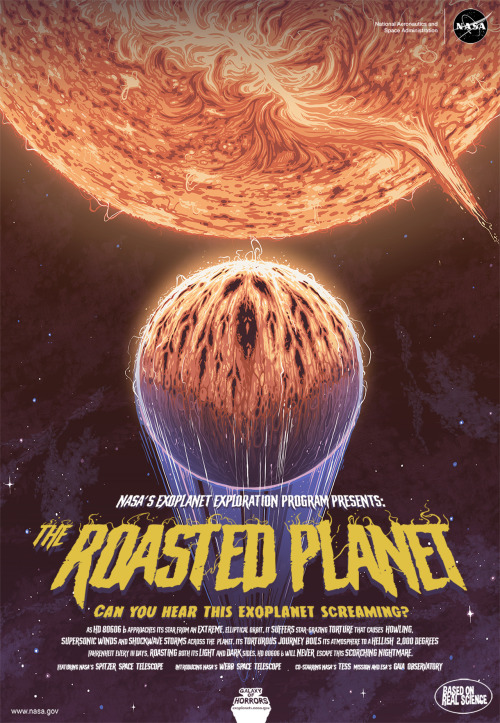
Can you hear this exoplanet screaming?
As HD 80606 b approaches its star from an extreme, elliptical orbit, it suffers star-grazing torture that causes howling, supersonic winds and shockwave storms across the planet. Its torturous journey boils its atmosphere to a hellish 2,000 degrees Fahrenheit every 111 days, roasting both its light and dark sides. HD 80606b will never escape this scorching nightmare.
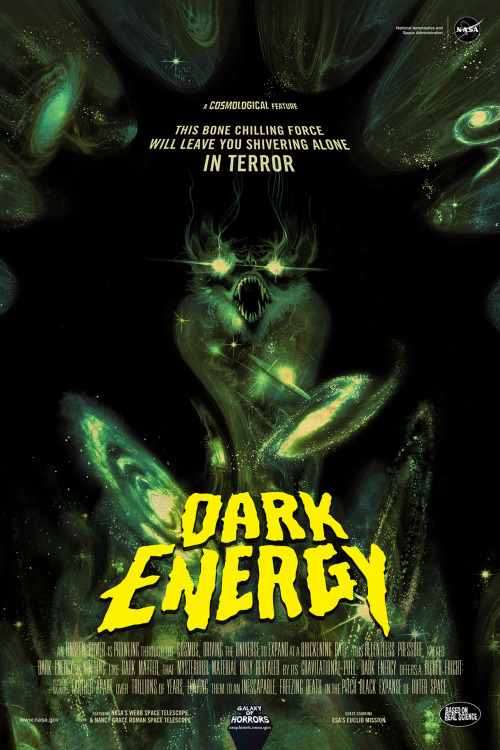
This bone-chilling force will leave you shivering alone in terror!
An unseen power is prowling throughout the cosmos, driving the universe to expand at a quickening rate. This relentless pressure, called dark energy, is nothing like dark matter, that mysterious material only revealed by its gravitational pull. Dark energy offers a bigger fright: pushing galaxies farther apart over trillions of years, leaving the universe to an inescapable, freezing death in the pitch black expanse of outer space.
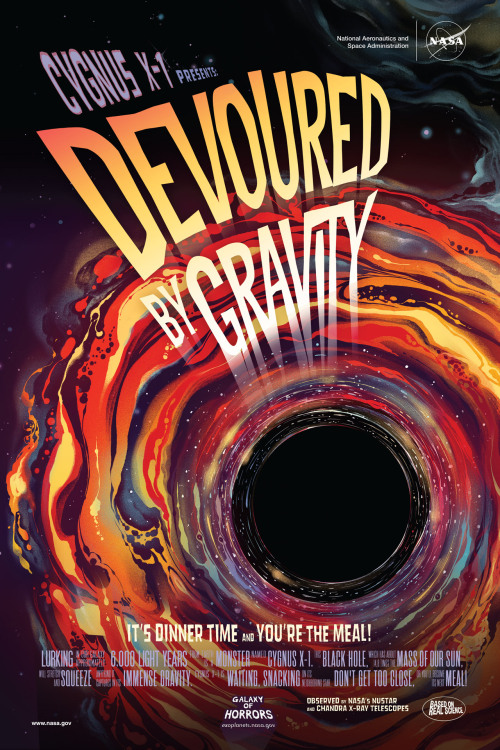
Cygnus X-1 Presents:
It’s Dinner Time and You’re The Meal!
Lurking in our galaxy, approximately 6,000 light-years from Earth, is a monster named CygnusX-1. This black hole, which has about 14.8 times the mass of our Sun, will stretch and squeeze anything it captures in its immense gravity. Cygnus X-1 is waiting, snacking on its neighboring star. Don’t get too close, or you’ll become its next meal!
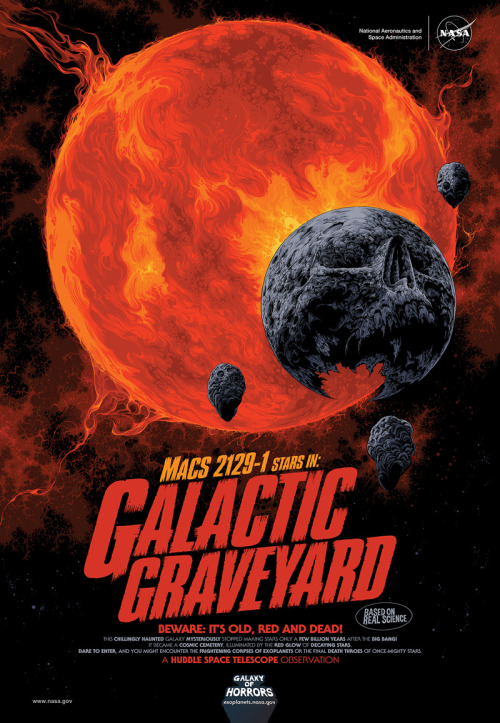
This chillingly haunted galaxy mysteriously stopped making stars only a few billion years after the Big Bang! It became a cosmic cemetery, illuminated by the red glow of decaying stars. Dare to enter, and you might encounter the frightening corpses of exoplanets or the final death throes of once-mighty stars.
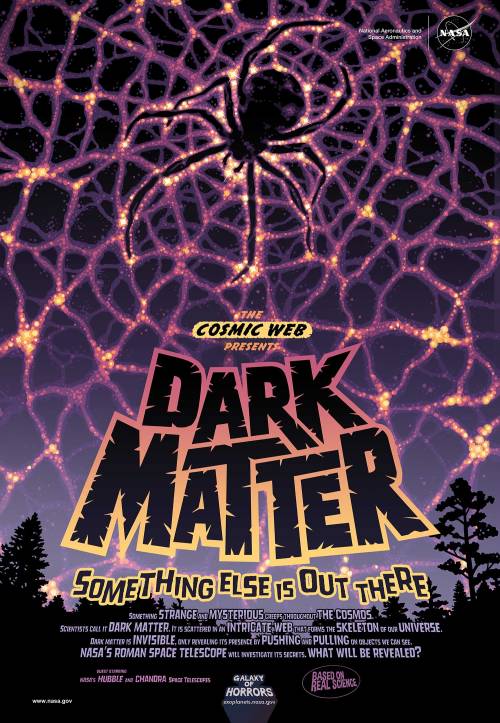
Something strange and mysterious creeps throughout the cosmos. Scientists call it dark matter. It is scattered in an intricate web that forms the skeleton of our universe. Dark matter is invisible, only revealing its presence by pushing and pulling on objects we can see. NASA’s Roman Space Telescope will investigate its secrets. What will be revealed?
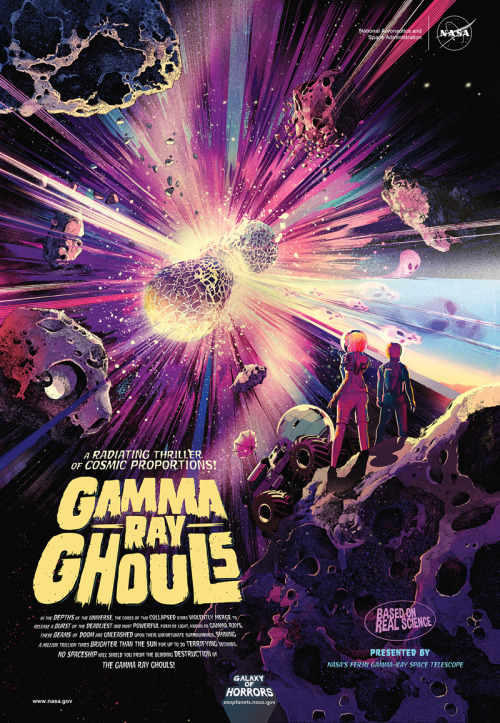
In the depths of the universe, the cores of two collapsed stars violently merge to release a burst of the deadliest and most powerful form of light, known as gamma rays. These beams of doom are unleashed upon their unfortunate surroundings, shining a million trillion times brighter than the Sun for up to 30 terrifying seconds. No spaceship will shield you from the blinding destruction of the gamma ray ghouls!
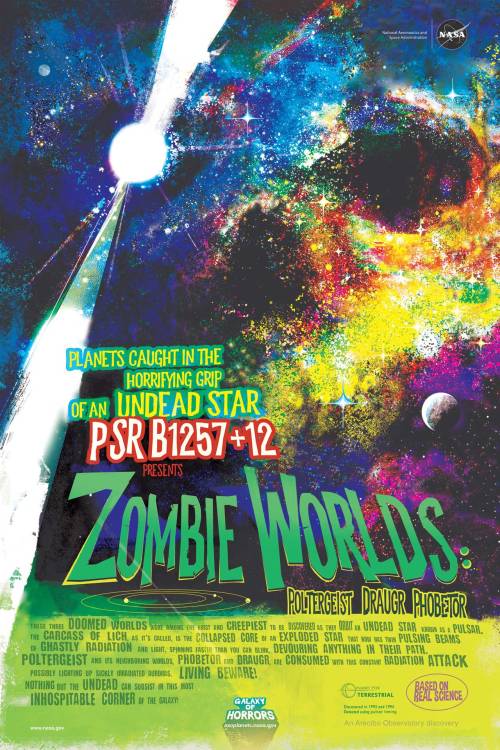
These doomed worlds were among the first and creepiest to be discovered as they orbit an undead star known as a pulsar. Pulsar planets like Poltergeist and its neighboring worlds, Phobetor and Draugr, are consumed with constant radiation from the star’s core. Nothing but the undead can subsist in this most inhospitable corner of the galaxy.
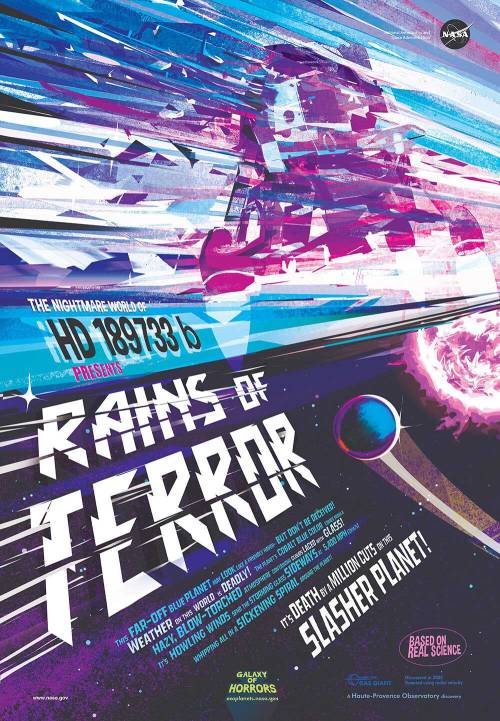
This far-off blue planet may look like a friendly haven – but don’t be deceived! Weather here is deadly. The planet’s cobalt blue color comes from a hazy, blow-torched atmosphere containing clouds laced with glass. Howling winds send the storming glass sideways at 5,400 mph (2km/s), whipping all in a sickening spiral. It’s death by a million cuts on this slasher planet!
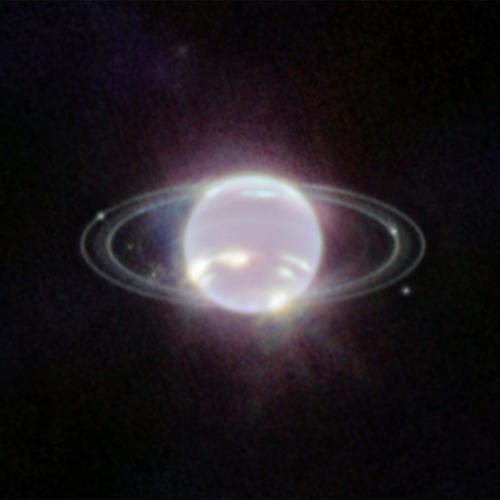
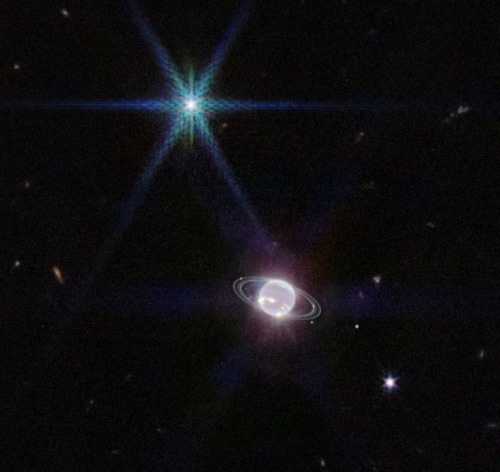
NASA released the clearest images of Neptune’s rings in over 30 years.

3D Bennu : Put on your red/blue glasses and float next to asteroid 101955 Bennu. Shaped like a spinning toy top with boulders littering its rough surface, the tiny Solar System world is about one Empire State Building (less than 500 meters) across. Frames used to construct this 3D anaglyph were taken by PolyCam on the OSIRIS_REx spacecraft on December 3, 2018 from a distance of about 80 kilometers. With a sample from the asteroid’s rocky surface on board, OSIRIS_REx departed Bennu’s vicinity this May and is now enroute to planet Earth. The robotic spacecraft is scheduled to return the sample to Earth in September 2023. via NASA

NASA’s Parker Solar Probe Spies Newly-Discovered Comet NEOWISE by NASA’s Marshall Space Flight Center

NGC 1999
Just south of the Orion nebula is a dense area of dust and gas forming stars, in fact, the first Herbig-Haro stars were located here, protostars pushing intense beams of matter out at the poles.
The mystery is the black blob in the white region, a reflective nebula from the star V380 Ori, but what is the dark patch ?

Originally it was thought to be a dense dark cloud of dust, hiding the light, however further analysis has found it is indeed a hole, made to look black in contrast to the bright reflective surroundings.

The Einstein Cross Gravitational Lens : Most galaxies have a single nucleus – does this galaxy have four? The strange answer leads astronomers to conclude that the nucleus of the surrounding galaxy is not even visible in this image. The central cloverleaf is rather light emitted from a background quasar. The gravitational field of the visible foreground galaxy breaks light from this distant quasar into four distinct images. The quasar must be properly aligned behind the center of a massive galaxy for a mirage like this to be evident. The general effect is known as gravitational lensing, and this specific case is known as the Einstein Cross. Stranger still, the images of the Einstein Cross vary in relative brightness, enhanced occasionally by the additional gravitational microlensing effect of specific stars in the foreground galaxy. via NASA

12072022: Edge of the Carina Nebula | First Images from The James Webb Space Telescope. Photography credits: NASA, ESA, CSA, and STScI

Stars burst into life in Carina
Hubble has discovered a dwarf star that devours its own solar system. It's like a cosmic cannibal

Astronomers used archival data from the Hubble Space Telescope and other observatories to analyze the spectral properties of the white dwarf star G238-44.
Detected elements show that the dead star swallows debris from both the inside and the outside of its system. It's a case of "cosmic cannibalism," say the study's authors, published on the Hubble Telescope website.
G238-44 was a Sun-like star that lost its outer layers and no longer burned fuel through nuclear fusion. The discovery that stellar debris simultaneously captures matter from its asteroid belt and Kuiper belt-like regions at the edge of the solar system, including ice bodies, is significant because it suggests that a "water tank" may be a common feature in outer areas. of planetary systems.
‼️When a star like the Sun expands and becomes a red giant, at the end of its life, it loses mass by releasing its outer layers.
➡️A consequence of this may be the gravitational scattering of small objects, such as asteroids, comets and satellites, to the large planets in the system. Hit in this way, surviving objects can be thrown into very eccentric orbits.‼️
☑️ "After the phase of the red giant, the remaining white dwarf star is compact - no bigger than Earth. The planets get very close to the star and experience strong forces of attraction that break them to pieces, creating a disk of gas and dust that eventually falls on the surface of the white dwarf star, "said Johnson.

Southern Tadpole © Logan Carpenter

NGC 6514, Trifid’s Unicorn














